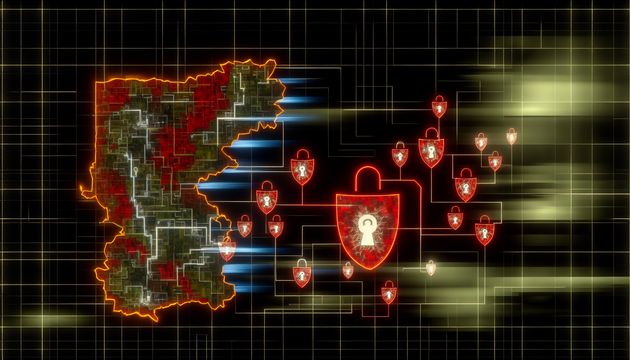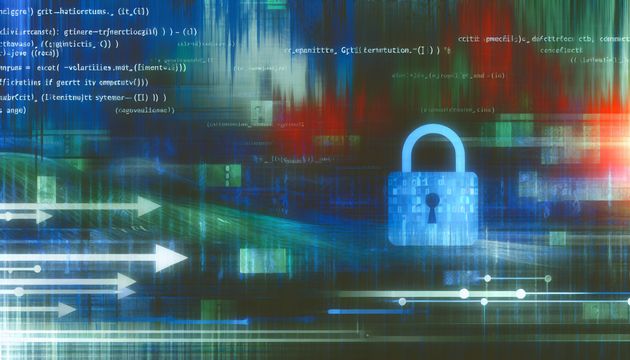
The Evolving Threat of DragonForce Ransomware: Strategies and Impacts
The DragonForce ransomware group has emerged as a formidable player in the cybercrime landscape, leveraging a ransomware-as-a-service (RaaS) model to extend its reach. This model allows various cybercriminals to join as affiliates, using DragonForce’s tools to execute attacks while sharing a portion of the ransom with the operators. Such a structure not only amplifies their impact but also complicates efforts to dismantle their operations (BleepingComputer).
DragonForce is notorious for its sophisticated tactics, including social engineering and SIM swapping, which exploit both human and technical vulnerabilities. SIM swapping involves tricking a mobile carrier into transferring a victim’s phone number to a new SIM card, allowing attackers to bypass security measures. MFA fatigue attacks, on the other hand, involve bombarding a user with authentication requests until they inadvertently approve one. Their recent attack on Co-op, affecting 20 million individuals, underscores the severe implications of their operations. The breach involved accessing personal data, highlighting the critical need for robust cybersecurity measures (BleepingComputer).
Understanding the DragonForce Ransomware Group
DragonForce’s Operational Structure
DragonForce operates as a ransomware-as-a-service (RaaS) platform, allowing various cybercriminals to join as affiliates. These affiliates utilize DragonForce’s ransomware encryptors and negotiation sites to execute attacks. The operators of DragonForce receive a commission of 20-30% from the ransoms paid by victims (BleepingComputer). This model enables DragonForce to expand its reach and impact by leveraging the skills and networks of different cybercriminals.
Tactics and Techniques
The DragonForce group is known for employing a range of sophisticated tactics to breach networks. Their methods include social engineering attacks, SIM swapping, and MFA fatigue attacks. These techniques are designed to exploit human and technical vulnerabilities to gain unauthorized access to systems (BleepingComputer). Once inside a network, affiliates typically steal data and deploy ransomware to encrypt files on servers and workstations.
Notable Attacks and Impact
DragonForce has been linked to several high-profile attacks, including the recent breach of Co-op. During this attack, they reportedly accessed data from 20 million people who registered for Co-op’s membership reward program (BleepingComputer). The stolen data included personal information such as names and contact details, but not passwords or financial information. This breach highlights the significant impact DragonForce can have on organizations and their customers.
Affiliations and Collaborations
DragonForce is believed to collaborate with English-speaking threat actors known as “Scattered Spider” or “Octo Tempest.” These actors are not a formal gang but rather an amorphous community of financially motivated individuals who share tactics and strategies on platforms like Telegram and Discord (BleepingComputer). This loose affiliation makes it challenging for law enforcement to track and apprehend individuals involved in attacks.
Defensive Measures and Recommendations
In response to the growing threat posed by DragonForce, cybersecurity experts have developed guidelines to defend against their attacks. These include strengthening multi-factor authentication (MFA) protocols, conducting regular security audits, and training employees to recognize social engineering attempts (BleepingComputer). Organizations are also advised to collaborate with cybersecurity firms and law enforcement to enhance their defensive capabilities.
Recent Developments and Future Outlook
The DragonForce group continues to evolve, with new members and copycats adopting their methods to carry out attacks. Despite the arrest of some original members, the threat persists as new actors emerge to fill the void (BleepingComputer). As DragonForce and similar groups adapt to changing security landscapes, organizations must remain vigilant and proactive in their cybersecurity efforts.
Case Studies and Analysis
Several case studies illustrate the methods and impact of DragonForce attacks. For instance, the breach of Co-op involved a social engineering attack that allowed threat actors to reset an employee’s password and gain access to the network (BleepingComputer). Once inside, they stole the Windows NTDS.dit file, which contains password hashes for Windows accounts. This case underscores the importance of robust password management and employee training in preventing similar breaches.
Legal and Regulatory Implications
The activities of DragonForce and similar groups have significant legal and regulatory implications. Organizations affected by ransomware attacks must navigate complex legal frameworks related to data protection and breach notification. In many jurisdictions, companies are required to report data breaches to regulatory authorities and affected individuals within a specified timeframe (BleepingComputer). Failure to comply with these regulations can result in substantial fines and reputational damage.
Collaboration with Law Enforcement
Efforts to combat DragonForce and similar groups involve collaboration between organizations, cybersecurity firms, and law enforcement agencies. By sharing information and resources, these stakeholders can enhance their ability to detect, prevent, and respond to ransomware attacks. Law enforcement agencies play a crucial role in investigating and prosecuting cybercriminals, although the decentralized nature of groups like DragonForce poses significant challenges (BleepingComputer).
Economic Impact and Cost Analysis
The economic impact of ransomware attacks by groups like DragonForce is substantial. Organizations face direct costs related to ransom payments, data recovery, and system restoration. Indirect costs include reputational damage, loss of customer trust, and potential legal liabilities. A comprehensive cost analysis reveals that the financial burden of ransomware attacks extends beyond immediate expenses, affecting long-term business operations and profitability (BleepingComputer).
Future Trends and Predictions
As DragonForce and similar groups continue to adapt and evolve, future trends in ransomware attacks may include increased targeting of critical infrastructure and supply chains. The use of advanced technologies such as artificial intelligence and machine learning by cybercriminals could enhance the sophistication and scale of attacks. For example, AI could be used to automate phishing campaigns or to identify vulnerabilities in systems more efficiently. Organizations must stay informed about emerging threats and invest in cutting-edge cybersecurity solutions to protect their assets and data (BleepingComputer).
Final Thoughts
The persistent threat posed by DragonForce and similar groups necessitates a proactive and collaborative approach to cybersecurity. Organizations must not only implement advanced security measures but also foster partnerships with cybersecurity firms and law enforcement to effectively combat these threats. As DragonForce continues to evolve, leveraging new technologies and tactics, staying informed and adaptable is crucial for safeguarding sensitive data and maintaining trust (BleepingComputer).
References
- Co-op confirms data theft after DragonForce ransomware claims attack. (2024). BleepingComputer. https://www.bleepingcomputer.com/news/security/co-op-confirms-data-theft-after-dragonforce-ransomware-claims-attack/



